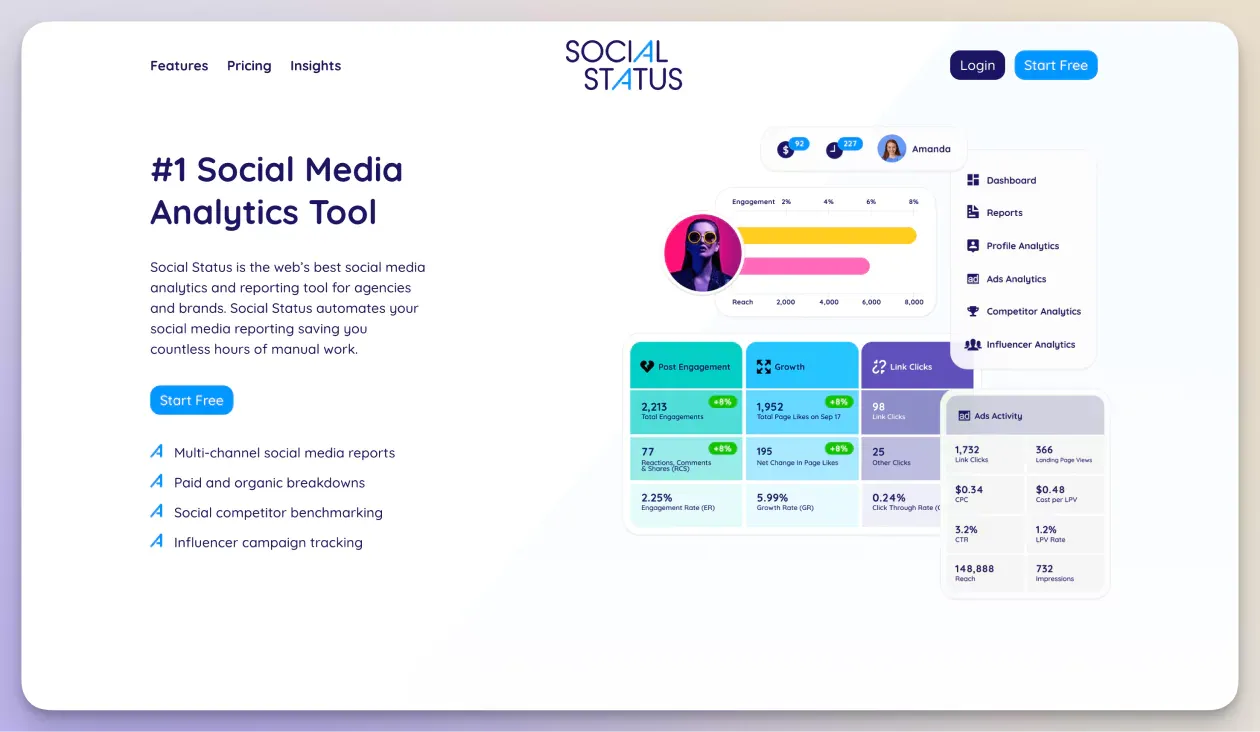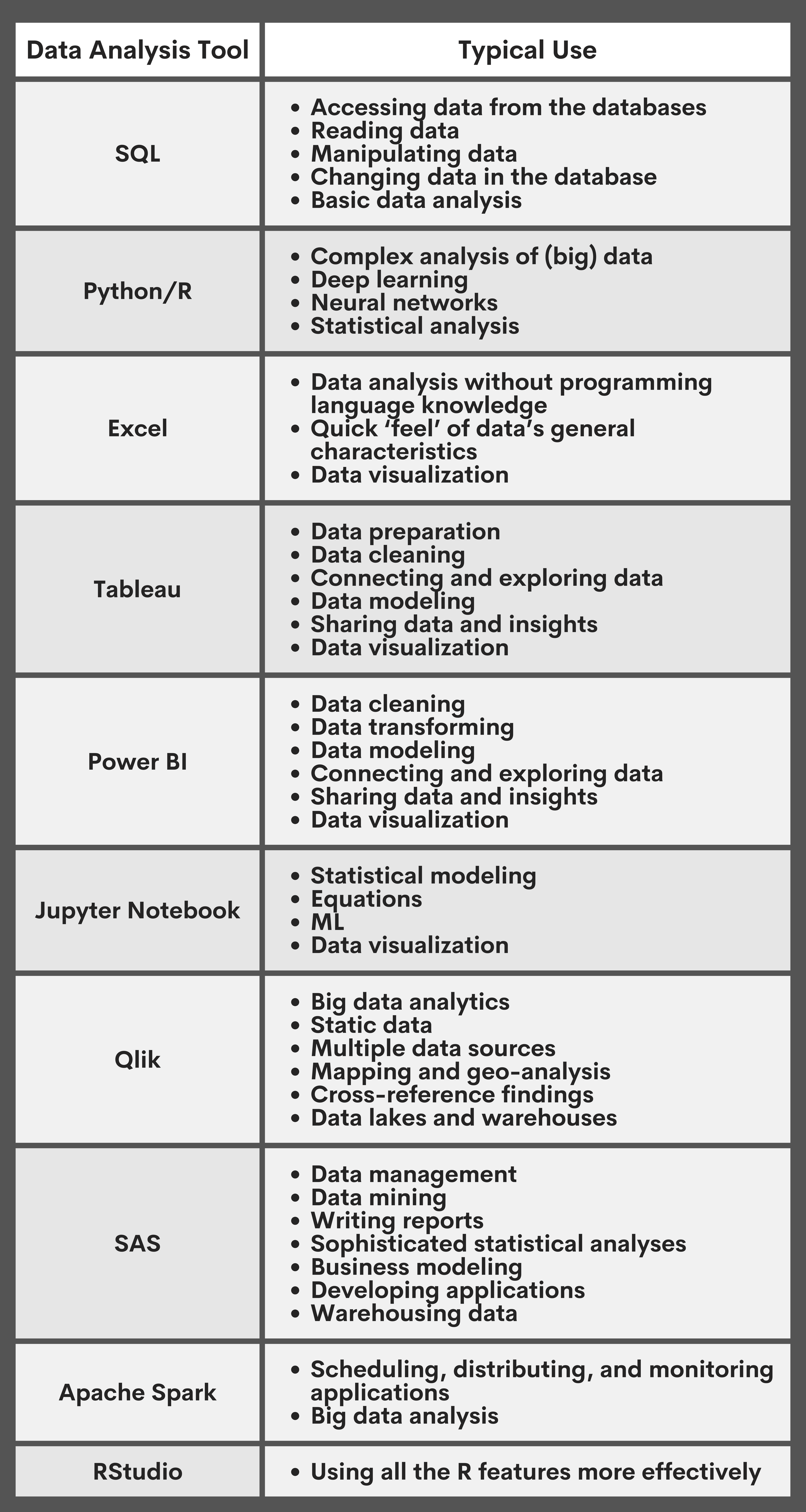Release the Full Possible of Information Making Use Of Robust Analytics
Release the Full Possible of Information Making Use Of Robust Analytics
Blog Article
Boost Effectiveness and Productivity Through Data Analytics
In today's data-driven landscape, businesses are significantly identifying the critical role of data analytics in improving operational effectiveness and success. By systematically assessing data, organizations can uncover essential insights that notify critical choices, streamline procedures, and tailor customer experiences (Analytics). Nonetheless, the obstacle exists not only in the execution of these logical devices yet also in recognizing just how to convert data into workable results. As we discover the nuances of efficient data-driven strategies, the implications for both short-term gains and long-lasting success come to be significantly clear. What might these insights reveal for your organization?
Comprehending Information Analytics
In today's data-driven landscape, understanding information analytics is necessary for organizations aiming to boost functional effectiveness and drive profitability. Information analytics entails the systematic computational evaluation of data sets to reveal patterns, relationships, and insights that inform decision-making. By using different methods, such as statistical evaluation, artificial intelligence, and predictive modeling, organizations can transform raw information into workable intelligence.
The process typically begins with information collection, where pertinent details is gathered from several sources, including transactional databases, consumer communications, and market fads. This data is after that cleansed and organized to make sure precision and consistency. As soon as the information is prepared, logical tools and software program are utilized to visualize the details and discover, allowing stakeholders to determine abnormalities and fads.
Ultimately, comprehending data analytics empowers companies to make informed decisions based on empirical proof instead than instinct. It promotes targeted strategies that can maximize resource allotment, enhance customer contentment, and boost total efficiency. As companies increasingly recognize the worth of data-driven insights, a solid grasp of data analytics comes to be a critical competency for leaders and groups alike, placing them for continual success in a competitive environment.

Key Advantages for Services
Companies that leverage data analytics can unlock a multitude of benefits that significantly boost their operations and productivity. One of the key advantages is improved decision-making. Information analytics provides workable understandings stemmed from real-time information, allowing organizations to make informed options that straighten with market demands and customer choices.

In addition, data analytics fosters improved client experiences. By recognizing consumer actions and choices, businesses can tailor their offerings, leading to enhanced fulfillment and loyalty. This tailored strategy often results in higher conversion prices and repeat organization.
Moreover, information analytics allows companies to determine emerging opportunities and patterns. By staying ahead of the contour, companies can maximize brand-new markets and advancements prior to their rivals.
Executing Data-Driven Approaches
Effective execution of data-driven approaches needs a detailed understanding of both business objectives and offered information resources. Organizations must initially define their objectives plainly, making sure alignment in between data initiatives and strategic goals. This clarity directory allows groups to focus on appropriate metrics and understandings that drive decision-making.
Next, businesses ought to assess their existing information infrastructure. This entails examining data high quality, accessibility, and integration capabilities. High-quality information is important for accurate analysis, as bad information can cause misguided approaches and squandered sources. Organizations should develop processes for information collection, cleansing, and management to keep data honesty.
Moreover, fostering a data-driven culture is critical. Workers in any way degrees need to be urged to leverage data in their daily operations. Educating workshops and programs can boost information literacy, empowering staff to make informed choices based upon logical insights.
Tools and Technologies Introduction
A durable suite of devices and modern technologies is vital for companies intending to harness the full possibility of information analytics. These devices promote the collection, handling, and visualization of data, enabling businesses to acquire workable understandings.
At the fundamental level, data administration systems such as SQL databases and NoSQL systems supply reliable information storage space and retrieval abilities. For data processing and analysis, programs languages like Python and R, in addition to structures such as Apache Glow, enable complicated computations and device learning applications.
Visualization tools, including Tableau and Power BI, change raw information into instinctive graphical formats, making insights available to stakeholders at all degrees. Furthermore, cloud-based systems like Google Cloud and AWS use scalable storage space and processing solutions, accommodating the expanding volumes of information organizations encounter.
For innovative analytics, predictive modeling and AI-driven options are significantly taken on, enabling firms to anticipate fads and enhance decision-making procedures. Integrating these devices try this into existing operations is critical; organizations that effectively leverage this modern technology can significantly boost operational performance and drive profitability. Thus, buying the right devices and innovations is a calculated critical for any data-driven company.
Study of Success
Leveraging information analytics has actually led various companies to attain remarkable enhancements in performance and earnings. One notable situation is a huge retail chain that implemented predictive analytics to maximize inventory management. By evaluating historical sales information and client patterns, the business lowered excess inventory by 30%, resulting in considerable expense financial savings and improved capital.
One more instance can be discovered in the manufacturing industry, where a leading vehicle supplier made use of information analytics to boost its production procedures. By keeping track of device efficiency in real-time, the company identified traffic jams and ineffectiveness, leading to a 20% increase in total tools performance (OEE) This not only increased production rates but additionally lessened downtime and maintenance costs.

These study illustrate how information analytics can drive strategic decision-making, enhance processes, and inevitably enhance both performance and success across numerous sectors.
Final Thought
In conclusion, the assimilation of data analytics right into organization procedures provides considerable possibilities for enhancing efficiency and earnings. By methodically analyzing data, organizations can recognize inefficiencies, enhance client experiences, and make notified choices. The fostering of anticipating modeling and real-time tracking better enables companies to stay ahead of arising fads and allocate resources properly. Ultimately, the tactical application of data-driven techniques fosters sustained competitive advantages and drives considerable renovations in functional efficiency and economic end results.
In today's data-driven landscape, understanding data analytics is vital for organizations aiming to enhance functional effectiveness and drive success. Data analytics involves the methodical computational analysis of data collections to uncover patterns, relationships, and understandings that notify decision-making. Information analytics provides workable insights obtained from real-time data, permitting organizations to make educated selections that line her explanation up with market needs and customer preferences.
Premium data is necessary for precise analysis, as inadequate information can lead to misdirected techniques and wasted sources. Organizations should establish procedures for data collection, cleansing, and monitoring to preserve data stability.
Report this page